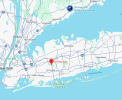Kind of figured it was about traffic flow and staffing. In 2023, N90 handled about 1.9 Million operations, second only to SOCAL. PHL under 480,000
TRACON controllers aren't looking out a window. Probably no different from an operational standpoint than the existence of multiple sectors within a single TRACON.
Hi all! Just want to set the record straight.
Yes it is possible to split N90 airspace up and move EWR sector to PHL Tracon.
However, the specific airspace we are dealing with in this case is uniquely complex and interconnected with N90 LGA and LIBERTY airspace.
We are constantly yelling across the room at each other and doing unique airspace sharing that dramatically improves efficiency.
With EWR airspace in PHL, we will lose some of those efficiency gains.
The best example I can give (although I have many others) is deviations around thunderstorms in Summer. I own very little airspace. When a LGA arrival tells me he needs 10 degrees left for 5 miles, he leaves my airspace. Period. I cannot accommodate deviations and remain in my airspace.
So I work with the EWR controller to borrow some of their airspace. But it’s not easy! They are busy, talking a mile a minute! So am I. Often times, making that phone call is nearly impossible!
So I ask my supervisor to walk over to the EWR controller scope and literally point exactly what I want to do with my planes. “He is gonna take the next 6 LGA arrivals here and then here. He will stay at 10,000ft until he back in his own airspace.”
It is incredible unnerving when your whole flow of LGA arrivals are deviating opposite direction of the EWR Departures, all of whom are climbing through the altitude of your arrivals!
So whenever I’m doing this, I’m very cautious to make sure the EWR controller knows EXACTLY what I’m doing with my airplanes.
I do NOT do this with other adjacent facilities. This kind of operation only works because they are right there in the same room as me.
If this move goes through, and EWR airspace is in PHL, I don’t believe those 6 LGA arrivals get to the airport nearly as quickly. I’ll end up putting the Centers into the hold until I can ensure that we have a safe plan to work them around the storms. I would say #1 gets 10 min in the hold and you can add 5 min to each subsequent arrival.
It’s a shame because we work so hard at N90 to be as efficient as possible. We squeeze every last drop out of this tight and complex airspace. But splitting this airspace into two separate buildings will seriously hamper our ability to do that.
We will always keep the planes safe. But we might have to slow the operation down.


